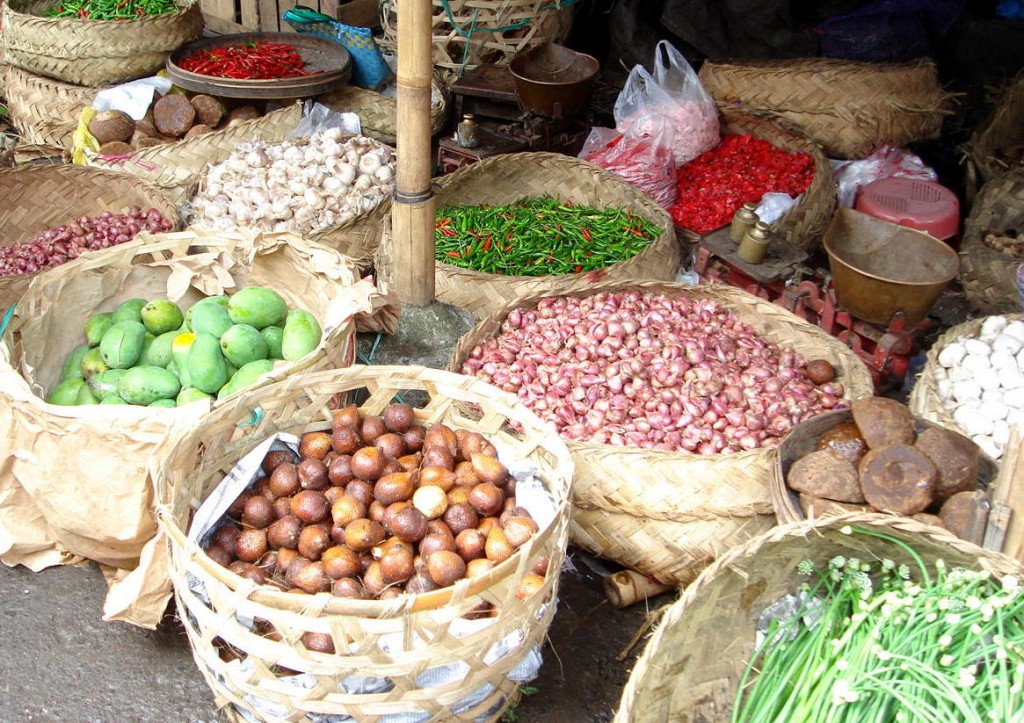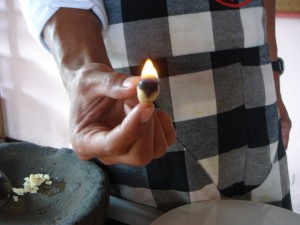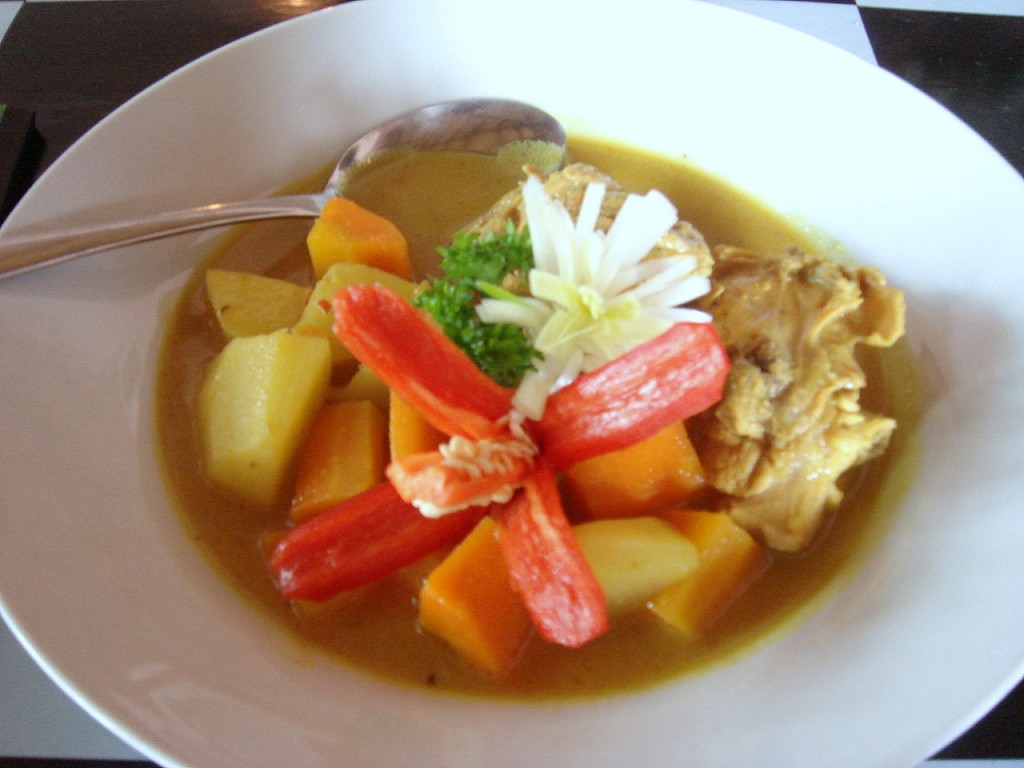Bumbu Bali: A Taste of Bali
Posted on Saturday, 13th September 2008
Curious to discover more about Balinese cooking techniques and the varied ingredients that make up the various flavours, I signed up for a cooking course. A number of restaurants in Ubud offer such courses, but I chose Bumbu Bali, a Balinese restaurant where I’d had dinner a few nights ago. Having eaten there, I knew the food was good and I’d therefore concluded that the course would probably be good too.

Ubud market
My day began with a visit to the markets to wade through the different types of local produce. Shopping at the markets for food has been a long standing tradition in my family. I prefer it to picking out packages of homogeneously sized vegetables at a supermarket. Chances are the produce has been produced nearby rather than shipped from afar, and I also prefer it for the fact that you also get to touch and smell the produce.
Back at the restaurant, we ran through the ingredients typically used in Balinese food including the many varieties of green and red chillies which I declined to taste test (ouch!). I was to cover six different dishes, but first and foremost, we covered in detail the base gede which is the true heart and soul of many Balinese dishes. This mixed spice paste consists of a large number of different spices including the most obvious ones such as ginger, garlic, chilli and turmeric.

Candlenut, burns like a candle
Also used were ingredients such as candlenut (so called because if you light it with fire it burns); and lengkuas and kencur, two root vegetables otherwise known as galangal and similar to ginger. In total we used some 15 different spices (although some variations of base gede will use up to 25 different spices), and in differing portions. These were ground together with a pestle and mortar into a fine paste with fish sauce added just before use.

Opor ayam (chicken curry)
The base gede forms the foundation of many dishes, not just as the flavour base of a variety of sauces but as a marinade for meat as well. On the menu today was opor ayam (chicken curry), sambal udang (spicy prawns), and sayur urab (mixed vegetables). When the base gede was combined with varying other ingredients to create these dishes, the result was an orchestra of flavours which burst out in incredible song; the delicate harmony of softer ingredients such as coconut milk and lemongrass against the zing and loud brass bangs of the chillies and garlic.

Sayur urab (mixed vegetables)
As a marinade it was incorporated into the minced pork meat that we used for the sates. In Bali, minced meat is used in sates rather than whole meat pieces as was typical in Javanese cooking, and by adding it to the mince it provided a nice finishing crescendo to what might had otherwise been dull minced meat.

Pork sate
[And here’s a video I’ve posted on YouTube on how to make the pork sate skewers.]
Whilst base gede might be the heart and soul of Balinese cooking, there were also other little touches I learnt about that perhaps paint a picture of what a gentle art form Balinese food is. For instance, the predominant use of white pepper rather than black to provide a more subtle taste; that onions are never used as they are too strong, with shallots and spring onions used instead as they have a gentler flavour. That kaffir limes are used rather than standard limes as they are less sour; that the mixed spice paste is always ground by hand, never by machine, for its only by hand that the ingredients release their maximum flavour. I adored these little subtleties for it’s always the little things that make a difference, that add that special touch.
Nengah was the name of my instructor and he has been a chef at Bumbu Bali for about ten years. Discovering a love of cooking at an early age, he learnt to cook from his mother’s hand and further developed his vocation as a chef by undertaking two years of further study to fine tune his technique. Once a meat eater, he became a vegetarian five years ago, so when cooking meat dishes, he cooks purely by touch, sight and smell.
I thoroughly enjoyed the cooking class, finding it to be both extremely well organised (all ingredients were prepared ahead of my arrival) and captivatingly interesting. Perhaps this was so because my curiosity was limitless and I asked many questions. But ultimately I think it was because the class proved to be an informative introduction to Balinese cooking. Communicated at a level filled with a genuine appreciation of food from one food lover to another, the class was much more than just a simple following of Balinese recipes. The word Bumbu translates as a “mix”, so Bumbu Bali means a mix of Balinese flavours, in other words, a “Taste of Bali”. A taste of Bali indeed.
Bumbu Bali Restaurant at:
1 Suweta Street
Ubud, Bali,
Indonesia
Tel: + 62 (0)361 974 217
Web: http://www.bumbubaliresto.com/
Note: cost of the class was 250,000 Rupiah (about £15).
Leave a Comment